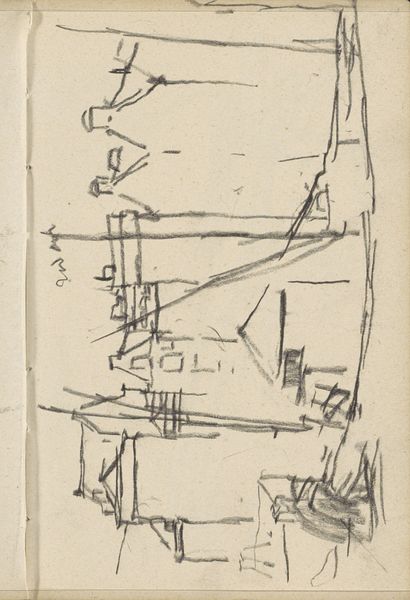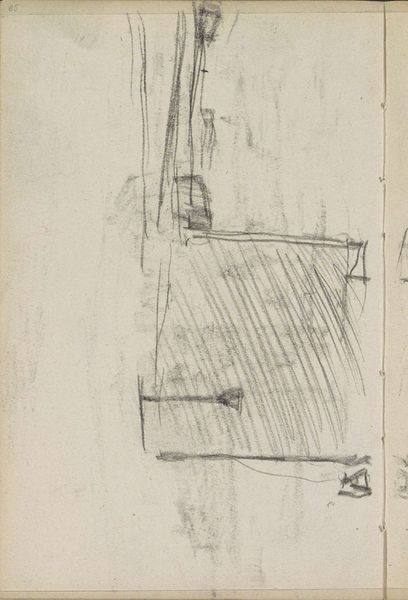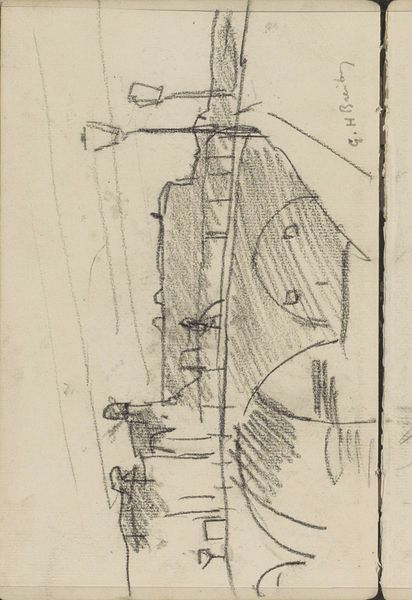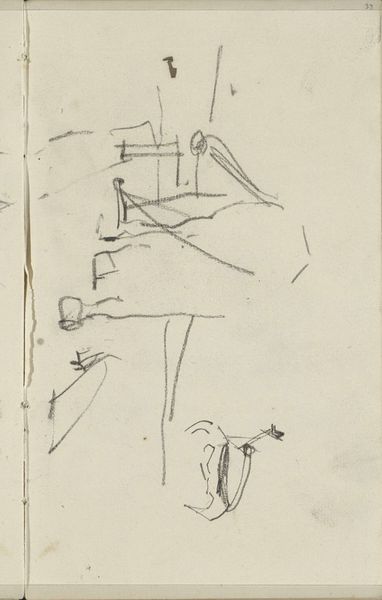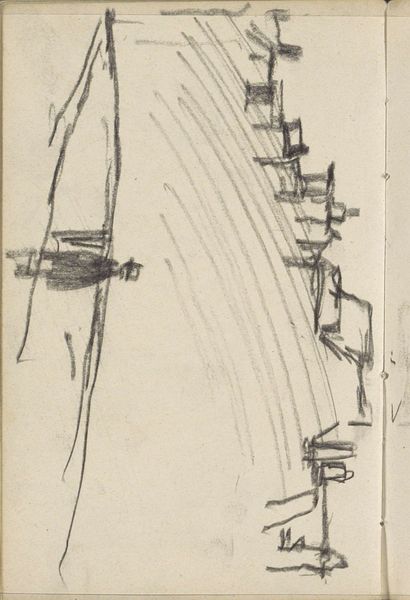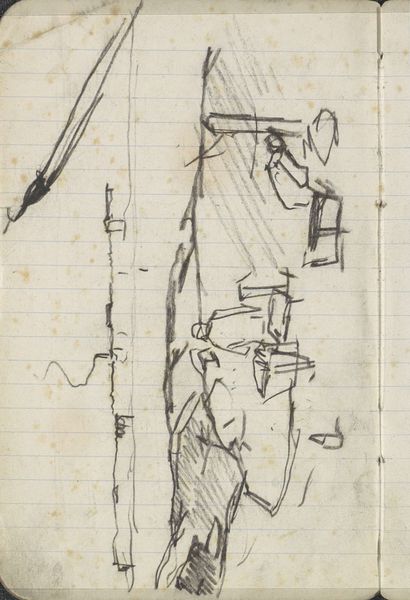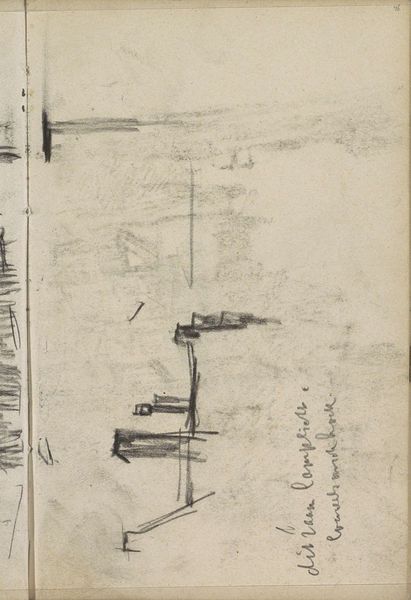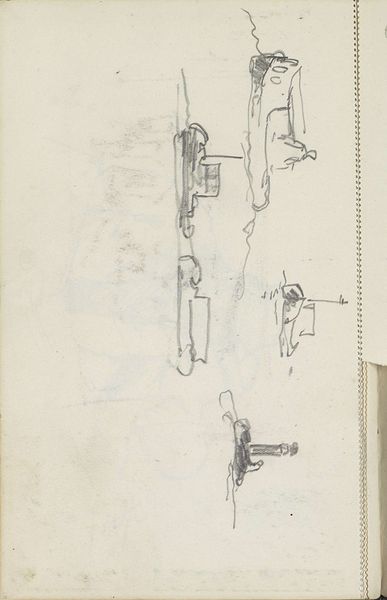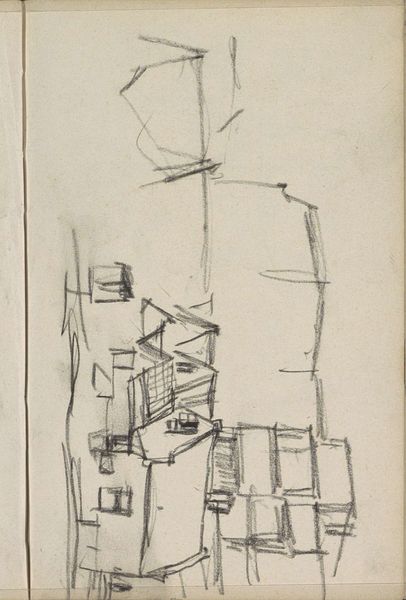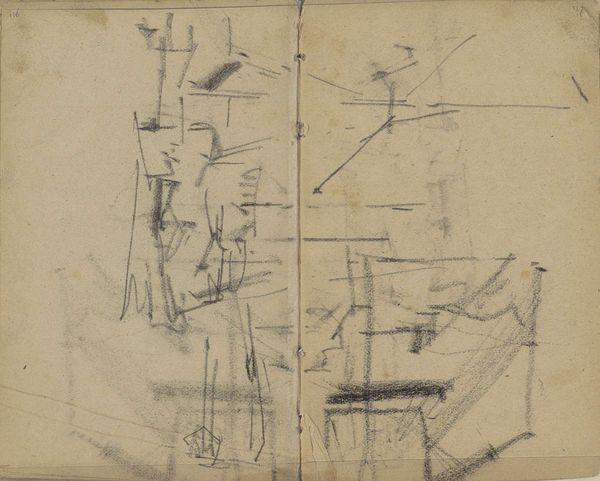
Copyright: Rijks Museum: Open Domain
Editor: Here we have George Hendrik Breitner’s “Gezicht in Amsterdam, mogelijk het Rokin,” made between 1912 and 1919, rendered in pencil. It's quite skeletal, and I am drawn to the apparent unfinished quality, with lines that feel exploratory. What do you see in this piece, from a formal perspective? Curator: The dynamism resides precisely in the structural framework. Breitner emphasizes line, almost to the exclusion of tone. Notice how the hatching creates volume without fully committing to a tonal representation. It suggests depth while simultaneously reminding us of the two-dimensional surface. The buildings become an exercise in angles and perspectives rather than straightforward architectural depiction. Editor: So, the *suggestion* of form is more important than the form itself? Curator: Indeed. Observe how the sketch utilizes layering, generating visual texture and a sense of spatial complexity. It doesn’t neatly resolve; there's a controlled imbalance in the composition itself. Do you find it aesthetically pleasing, and if so, why? Editor: I do. I appreciate the honesty. It is less concerned with beauty and more focused on capturing the essence of the location, as the quick pencil strokes denote only what’s essential. This gives the image an authentic, almost journalistic quality. I learned that sometimes, less really is more. Curator: A compelling and accurate summary. The unfinished quality invites our participation in completing the image, engaging the viewer beyond mere observation.
Comments
No comments
Be the first to comment and join the conversation on the ultimate creative platform.
